Tagged With ‘lemon’
Tom Daxon
Laconia
2 July, 2018
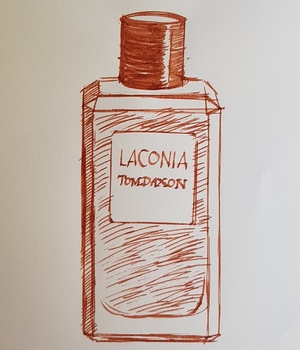 The Greek region of Laconia includes some of the most historic and spectacular parts of the Peloponnese, including the city of Sparta (the regional capital), the Mani peninsula and, on its eastern edge, the extraordinary presque-île of Monemvasia. Seen from the mainland, this huge rock – over 100 metres high, 300 metres wide and a kilometre long – towers over the sea that encloses it, surrounded by precipitous cliffs on every side. Connected to the shore by a narrow causeway, it makes a formidable natural fortress, and in the middle ages an important city grew up on its summit, connected to a small walled town on the narrow shelf at its base.
The Greek region of Laconia includes some of the most historic and spectacular parts of the Peloponnese, including the city of Sparta (the regional capital), the Mani peninsula and, on its eastern edge, the extraordinary presque-île of Monemvasia. Seen from the mainland, this huge rock – over 100 metres high, 300 metres wide and a kilometre long – towers over the sea that encloses it, surrounded by precipitous cliffs on every side. Connected to the shore by a narrow causeway, it makes a formidable natural fortress, and in the middle ages an important city grew up on its summit, connected to a small walled town on the narrow shelf at its base.
Lacking water and reliant on man-made cisterns cut into the rock, the city was gradually abandoned and today lies in romantic ruins, overgrown with scrub and difficult to explore. But the little town has been gradually restored, and now forms a car-free tourist haven. It was while staying at a luxury hotel here that British perfumer Tom Daxon found the inspiration for his latest scent, in the form of lemonade made with ice, local mint and honey and lemons grown on the hotel’s own estate. He’s named it after the region, which itself gave us the word ‘laconic’, apparently because Spartans were famously sparing with words.
Like me, Daxon is a fan of colognes, especially for the summer months, but he also feels that his customers want something that lasts longer than a few minutes on their skin. Citrus scents, refreshing though they may be, are notoriously short-lived, so the question was how to extend his new fragrance in an interesting way. His solution includes quite a long list of zingy and green ingredients, starting with lemon, yellow mandarin, orange and bergamot, followed by violet leaf, spearmint and clary sage, as well as ginger, cubeb, pink pepper and cardamom, all underpinned by vetiver and long-lasting synthetic musks.
The result is an attractive, fresh-smelling perfume with good staying power, though personally I’m willing to forego longevity in a cologne in favour of that all-important if all too short-lived blast of uplifting freshness – a laconic cologne, if you will. But when you’re paying £155 for 100ml, I can see the argument in favour of depth and development. I also admire the design of Daxon’s chunky, faceted bottles and smart monochrome packaging, which adds to the feeling of weight and lasting quality.
Acqua di Parma
Colonia | Colonia Assoluta
14 July, 2015
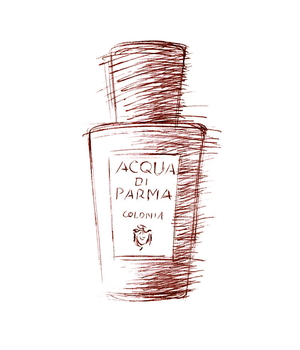 Before I start, I have to admit that the Acqua di Parma colognes have never really floated my boat, but very kindly the company have sent me some samples to try, and as it’s one of the most popular men’s fragrances I wanted to explore why that might be.
Before I start, I have to admit that the Acqua di Parma colognes have never really floated my boat, but very kindly the company have sent me some samples to try, and as it’s one of the most popular men’s fragrances I wanted to explore why that might be.
There are lots of things to like about Acqua di Parma Colonia. Its packaging, for starters, is wonderfully elegant: a golden-yellow, linen-textured cardboard tube, which splits exactly in half to reveal the bottle tightly nestled inside.
The bottle itself is a beautifully judged design, in plain glass with gently flared shoulders and a chunky black cap to match. And the typography is lovely: effortlessly stylish, with something of the 1920s about it. The whole package is an object lesson in how to make a product that says ‘classic’ and ‘quality’.
So what about the scent inside? Again, it’s classic and simple – perhaps a little too simple for me. The original Colonia was launched in 1916, and I’m presuming it was always a fresh, citrussy eau-de-cologne, though like pretty much every long-lived fragrance on the market it will almost certainly have been reformulated over the years.
That’s not always a bad thing, and today’s version may well smell more sophisticated than the original; Agua de Colonia by the Spanish brand Alvarez Gomez, for example, may conceivably have been less tinkered with, but by comparison it smells quite crude and harsh.
Not that Colonia has a particularly complex character: it’s intensely lemony when first you spray it on, but as the sharpness of the lemon fades into the background you get the clean, herbal smells of rosemary and lavender. So far so classic eau-de-cologne, but what makes Colonia different is the fact that it’s also blended with rose, which adds an unobtrusively feminine touch – a bit like the artificial jasmine scent at the centre of Eau Sauvage, though not nearly as striking in its effect.
The rose (I think) also makes Colonia smell rather talcum-powderish, which is pleasant enough but comes across as somehow rather old-ladyish – I guess because we associate powdery perfumes with an older generation. It certainly smells clean and fresh, in a soapy kind of way, and perhaps that explains its popularity among men for whom smelling clean and fresh is the main (and often only) purpose of perfume.
Personally I want to smell a bit more interesting than fresh laundry, and my other problem with Colonia is that it doesn’t last: within an hour or two I can hardly smell it on my skin. Again, that may be part of its appeal for men who are a bit nervous about wearing scent of any kind, so horses for courses, I suppose.
After its glory days in the 1920s, the Acqua di Parma company limped along until 1993, when it was bought by three rich Italian businessmen whose money came from Ferrari cars, Tod’s shoes and La Perla underwear. They launched scented candles and the like, but it wasn’t until after the luxury conglomerate LVMH took a stake in 2001 that the Colonia range was extended.
First came Colonia Assoluta in 2003, followed by Intensa in 2007, Essenza in 2010 and Intensa Oud in 2012. I have all of these versions apart from Intensa Oud, and I have to admit that, though I thought I had a fairly sensitive sense of smell, the differences between them are so subtle that I find them almost impossible to tell apart.
Colonia Assoluta was formulated by two of the best-known perfumers around today: Jean-Claude Ellena (creator of Vétiver Tonka, among others) and Bertrand Duchaufour (creator of many unusual fragrances, especially for L’Artisan Parfumeur), which is a bit like getting Debussy and Ravel to compose a duet. The results should be extraordinary, but these two great talents seem to have cancelled each other out: Colonia Assoluta is discreet to the point of invisibility, like a plain grey Hermès jumper.
What Duchaufour and Ellena seem to have done is shuffled a few of the ingredients of the original Colonia about a bit – changing the lavender for jasmine, for example – but it’s all so carefully balanced that the overall effect is almost identical, though you can smell a faint difference after an hour or two. Their work is certainly very subtle and clever, like Gus Van Sant’s frame-by-frame remake of Psycho, but you could argue that it’s equally pointless.
The same conjuring trick, if it’s fair to call it a trick, seems to have been achieved with the Essenza and Intensa versions: in each of them the ingredients are slightly different, but their smell is even less varied than their packaging (Essenza comes in a black tube, but is otherwise, ahem, a carbon copy).
Brilliant or bonkers? Delicious discreet or disappointingly dull? I’ll have to let you compare them for yourself. Maybe my nose isn’t as super-sensitive as it should be, but I’d be interested to hear what other people think. All the same, thank you to Acqua di Parma for letting me give them a try: they certainly look very handsome on my perfume shelf.
Balmain
Monsieur Balmain
25 May, 2015
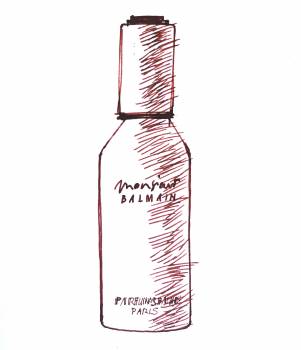 Lemon verbena is not, it has to be said, the most beautiful shrub in the world, though it’s easy enough to grow in a sunny corner. Its long woody stems give it a rather ungainly appearance, with tufts of spear-shaped leaves at their ends, which appear so late in the season that I’ve often wondered whether the one in my garden was dead.
Lemon verbena is not, it has to be said, the most beautiful shrub in the world, though it’s easy enough to grow in a sunny corner. Its long woody stems give it a rather ungainly appearance, with tufts of spear-shaped leaves at their ends, which appear so late in the season that I’ve often wondered whether the one in my garden was dead.
Aloysia citrodora, to give it its Latin name, grows wild across much of South America, and like so many other garden plants it was brought to Europe by Portuguese and Spanish colonists at some point in the seventeenth century.
Though you wouldn’t grow lemon verbena for its shape, its leaves are a different matter. Long, narrow and folded neatly in half along their length, they are bright green, shiny, and rather rough and sticky to the touch. But what makes them special is the scent they release when crushed, which is so deliriously refreshing that, once I’ve started sniffing them, I find it extremely hard to stop. They make a fine herbal tea (the verveine in which Proust dipped his famous madeleine) and an even finer perfume.
As both its common and Latin names suggest, lemon verbena has a lemony scent – yet that hardly does it justice. Lemons may have a wonderfully fresh, sharp tanginess of their own, but it’s accompanied by the sour, mouth-puckering sharpness of their taste. Lemon verbena has none of that. It has all the freshness of lemon, for sure, but mixed with a gentle sweetness that never becomes cloying, however often you smell it.
This sherbety, sorbet-y scent has all the innocence of childhood: just smelling it can give me the giggles. It might not be the most sophisticated fragrance in the world, but I can think of few better pick-me-ups on a dull dark morning, or for that matter on a sultry summer’s day. And what I love about Monsieur Balmain is that it smells pretty much exactly like lemon verbena, with little else to distract your attention – and why would you want to have your attention distracted from such a delicious scent?
Perfume buffs will already know that Monsieur Balmain was originally created by Germaine Cellier, who was the perfumer behind such justly famous fragrances as Fracas, Bandit, Vent Vert and Jolie Madame. Cellier died in 1976, and Monsieur Balmain was relaunched in 1991 in a new – but apparently faithful – reformulation by Calice Becker, the creator of (among many others) Tommy Girl and Dior’s J’Adore. More recently its bottle has also been redesigned, which means that my illustration is already out of date. For once, though, the new design is classier than the old one, so all respect to Balmain (or rather to Inter Parfums, the company that recently bought Balmain’s perfume licence).
Knize
Knize Ten
8 May, 2015
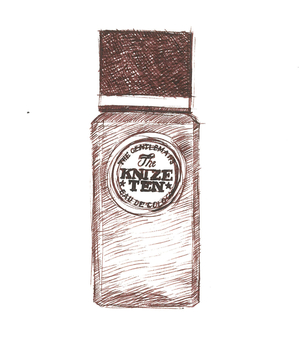
The year 1924 was a great one for perfume, if only because it saw the launch of both Chanel’s sumptuous Cuir de Russie and this, the wonderful Knize Ten. That both have survived into the present day is a bit of a miracle, but though they’re both usually placed in the ‘leather’ category of fragrances, they could hardly be less similar.
Cuir de Russie is a wonderfully rich and complex perfume, but its oddly androgynous combination of smoke and leather with a heavy floral note can make it rather difficult to wear. Knize Ten is a much more immediately appealing, fresher-smelling scent, and its leatheriness is tempered with the kind of zesty and herbal ingredients you’d expect to find in a classic eau-de-cologne – things like bergamot, lemon and geranium.
These gradually fade away on the skin, leaving a lovely, long-lasting but not overpowering leathery scent, less smoky than it is sweet. To me it also has a strong whiff of heliotrope – those electric-blue park bedding plants whose cherry-pie scent can be so intoxicating on a hot still high-summer’s day – but others may detect more than a hint (if I remember it right) of Plasticine; not unpleasant in itself, but enough to add a touch of childhood to the mix.
If Cuir de Russie is a testament to the genius of Ernest Beaux (whose greatest triumph was Chanel No 5), then Knize Ten is a fitting monument to François Coty (the mass-market perfume pioneer) and his brilliant technical director, Vincent Roubert (who had previously worked with Ernest Beaux in Grasse, then the perfume capital of France). It was commissioned, rather unusually, by a bespoke men’s tailoring company from Vienna, Knize, whose boutique is still going strong today. I’d wondered whether Knize Ten was the sole survivor of nine other fragrances, but it turns out that the name was dreamed up by their advertising director of the time, who beat Ralph Lauren by at least 50 years by seeking to associate the company with the aristocratic imagery of polo: the name ‘Ten’ was chosen to reflect the highest handicap in the game.
I love everything about Knize Ten: not just its instantly appealing smell but the smart glass bottle, with its crisply bevelled corners and chunky black cube of a cap. I’ve read somewhere that, like the company’s Viennese store, it was designed by the legendary Austrian architect Adolf Loos, and although that seems like wishful thinking it could be true; Loos designed further shops for Knize in Paris and Berlin, so their association was obviously close, and the dates look perfectly plausible too.
Even the typography of the label – a bold slab serif in a Victorian playbill style – is punchy and confident, just like the perfume inside. And while it’s far less widely available than it deserves to be, it’s not even that expensive by contemporary standards: what’s not to like?
Guerlain
Habit Rouge
27 April, 2015
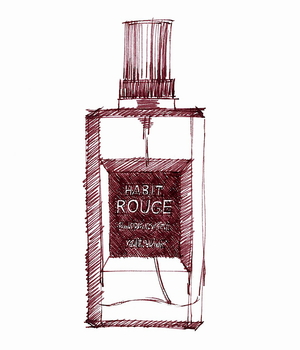 ‘Mass luxury’ may be the oxymoron of the moment, but the name of Habit Rouge is a nod back to a time when perfume really was a luxury enjoyed only by the stinking rich (eg the family Guerlain), among whom fox-hunting was a favourite pursuit.
‘Mass luxury’ may be the oxymoron of the moment, but the name of Habit Rouge is a nod back to a time when perfume really was a luxury enjoyed only by the stinking rich (eg the family Guerlain), among whom fox-hunting was a favourite pursuit.
Habit Rouge, in this context, is the French term for what British toffs call (with typical bourgeois-baiting mystification) ‘hunting pinks’, the scarlet riding jackets worn while hunting the fox. But that’s as far as the hunting or riding references go, which is probably a good thing, if you know what an actual fox or a horse-stable smells like.
Created by the last of the great Guerlain family perfumers, Jean-Paul, and launched in 1965, Habit Rouge was only the third Guerlain fragrance to be aimed at men. In character it is very different from its immediate predecessor, Vetiver, launched in 1959. While Vetiver is elegantly earthy (a brilliant contradiction in terms) and ineffably masculine, Habit Rouge is much more dandified, with a sharp, powdery sweetness that some people love but that makes others gag – imagine lemon sherbert in liquid form and you won’t be far wrong.
According to my friend the perfumer Roja Dove (who worked at Guerlain for twenty years), it ‘has an extraordinary volume of hesperidic materials, especially bergamot and lemon, which make up in excess of 25 per cent of the formula. Without question you can “feel” their effervescence.’It’s so zingy to start with that I wonder whether it might even contain a touch of aldehydes – the chemicals that give Chanel No. 5 its champagne fizz.
With all that lemon you’d imagine it would smell like an eau de cologne, but like other classic Guerlain perfumes Habit Rouge has great depth and complexity, and in the terminology of the perfume world it actually counts as an ‘oriental’-style fragrance, as behind the sherbert there’s a surprising amount of spice as well.
Though the version we have today was apparently ‘cleaned up’, as the industry jargon has it, by another fine perfumer, Edouard Fléchier, to comply with updated regulations governing the use of potentially harmful ingredients, it still smells wonderfully rich, with traces of vanilla and patchouli for those who smell it carefully.
Habit Rouge also lasts and lasts, which for me is an added plus when a perfume is as great as this – for anyone on a limited budget it’s hard to justify spending £70 or so on something that vanishes within an hour of putting it on. Definitely worth hunting down.
Annick Goutal
Eau de Monsieur
26 March, 2015
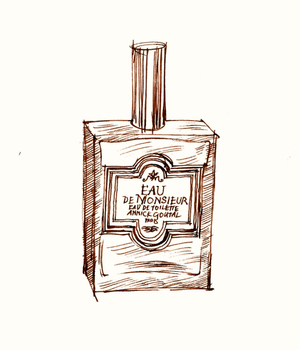 Mention the name Annick Goutal and the first scent that springs to mind is Eau d’Hadrien, the intensely lemony, slightly hair-sprayish scent that was launched in 1981 and went on to become the company’s best-seller.
Mention the name Annick Goutal and the first scent that springs to mind is Eau d’Hadrien, the intensely lemony, slightly hair-sprayish scent that was launched in 1981 and went on to become the company’s best-seller.
But before Eau d’Hadrien came Eau de Monsieur. Launched in 1980, discontinued for a while and then relaunched in 2013, it shares its lemony, eau de cologne-like zest with Eau d’Hadrien, but it’s an altogether quieter, softer fragrance.
Eau de Monsieur, like Eau d’Hadrien, is based around the zesty, zingy smell of lemons and the slightly pear-drop-lemony sweetness of lemon verbena (extracted from the leaves of a straggly South American shrub).
But while that’s pretty much the start and the finish of Eau d’Hadrien, that initial burst of sharp sweet freshness quickly fades to reveal what smells a bit like a sun-drenched Greek mountainside underneath – that scent of crushed thyme, cistus leaves and lavender, which in this case has an added touch of helichrysum, that strong-smelling everlasting flower that the French call immortelle.
Immortelle isn’t a scent that everybody loves: to me it has the richness of brandy and Christmas pudding and crackling pine-log fires, but to other people it has a medicinal TCP smell, which isn’t something you necessarily want in a perfume.
In Goutal’s fantastic Sables, released a few years later in 1985, immortelle is the main ingredient, but in Eau de Monsieur it’s used in moderation to give a subtle background sweetness. According to the list of ingredients on the Annick Goutal website, it also includes patchouli and sandalwood, which add a bit of their gentle warm woodiness to the mix, and there’s a little bit of bitterness too, which other writers have ascribed to that classic men’s-fragrance ingredient, vetiver.
It’s not, perhaps, the most original perfume out there, and it’s disappointing to discover that it only last an hour or so on the skin, but Eau de Monsieur is classy, attractive, natural-smelling and easy to wear, which is a lot more than you can say for the majority of men’s fragrances.
Givenchy
Givenchy Gentleman
25 October, 2014
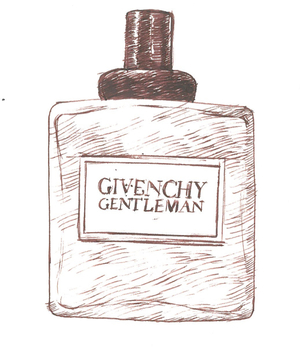
I don’t often, to be honest, feel very hippyish, but on the odd occasions when I do then Givenchy Gentleman suits my mood very well, with its distinct patchouli smell.
The original version was released in 1974 to tie in with couturier Hubert de Givenchy’s first ready-to-wear boutique, and it must have seemed bang on trend back then. Created by Paul Lèger (who also had a hand in the big-selling women’s perfume, Anaïs Anaïs), it was quickly hailed as a masterpiece, but has since been turfed out of the perfume pantheon, not least because the original recipe was fiddled about with a few years ago – presumably to save money and comply with tighter industry regulations.
If Givenchy Gentleman contained nothing but patchouli I wouldn’t be writing this review, but Lèger’s long list of ingredients included cinnamon, vetiver and something that approximates to the smell of leather. The last two in particular give the scent its appealing earthy, masculine character and stop it from being too sweet or cloying; it also contains (or contained) a whole host of other fragrance ‘notes’, including lemon and bergamot, tarragon, cedar and sandalwood, which added to Givenchy Gentleman’s complexity and depth.
It may not be the perfume that once it was, but I haven’t yet found a more wearable patchouli-based scent for men, though I have to admit that the latest version (has it been reformulated again?) starts well but then develops a slightly sour, unattractive undertone on the skin.
It’s been repackaged too, and the latest bottle has such a cheap label that if I didn’t know better I’d be inclined to suspect I’d been sold a dodgy knock-off from a market stall. Sadly it seems that the knock-off effect is entirely Givenchy’s own.
Hermès
Concentré d’Orange Verte
18 July, 2014
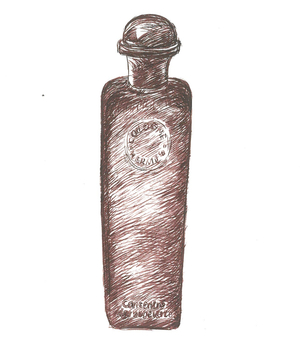 In 1979, Hermès launched a brilliant take on the classic men’s eau-de-cologne. Simply called Eau de Cologne d’Hermès, it was created by Françoise Caron, who you could almost say had perfume in her blood. Born in the one-time capital of French fragrance, the Provençal town of Grasse, into a family that worked in the perfume trade, both she and her brother, Olivier Cresp, became highly regarded professional perfumers in their own right.
In 1979, Hermès launched a brilliant take on the classic men’s eau-de-cologne. Simply called Eau de Cologne d’Hermès, it was created by Françoise Caron, who you could almost say had perfume in her blood. Born in the one-time capital of French fragrance, the Provençal town of Grasse, into a family that worked in the perfume trade, both she and her brother, Olivier Cresp, became highly regarded professional perfumers in their own right.
Many perfumes are variations on a theme, and the fresh, citrusy scent of eau-de-cologne is probably the best-known theme of all. But some variations are more interesting and successful than others, and Françoise Caron’s master-stroke was to turn up the volume, if you like, on a single ingredient – bitter orange – that plays a subsidiary role in most colognes.
The effect is delicious and bracingly sour-sweet, like a proper old-fashioned lemonade, but because orange is a more powerful, complex citrus scent than lemon it has far more depth and staying power. Françoise Caron also included mint (which adds a minor cooling touch), as well as lime and blackcurrant buds – which, if like me you have blackcurrant bushes in your garden, you’ll know have an intriguing scent, both sweet and slightly foxy.
Eau de Cologne d’Hermès continued in production until 1997, when Hermès changed its name to the slightly more individual Eau d’Orange Verte, though the scent remained the same. One criticism of Caron’s original perfume was that it didn’t last very long, and presumably as a response to this, in 2004 a concentrated version was released, tweaked by in-house perfumer Jean-Claude Ellena and helpfully called Concentré d’Orange Verte.
It’s this version I like best, I suppose because it seems to have retained all the character of Françoise Caron’s original yet packs a rather more powerful punch, and on my skin at least it certainly seems to last a good hour or two. It’s a zesty, uplifting and – I’d say – a happy scent, and one that I’d happily wear every day. Perfect for lifting the spirits on a dull grey Monday morning.
Random recent round-up
15 July, 2014
Following on from my brief review of Francis Kurkdjian’s latest men’s fragrance, PLURIEL, here are three more recent releases that I’ve been given by generous perfume companies, but that don’t appeal enough to me to merit giving them a full review.
I’ll start with Cartier’s DECLARATION L’EAU. Like the original Déclaration, L’Eau comes in a thin, high-shouldered, easy-(if you’re me)-to-knock-over bottle, and has the same fiddly, easy-to-break spray-closure. It’s also almost impossible to get the bottle back inside the box, thanks to an awkward cardboard liner.
As for the fragrance itself, it’s pleasant enough, smelling fairly fresh and natural when you first spray it on, with lemon and slightly sweaty hint of cumin. It’s not something I’d rush out and buy when there are so many better perfumes to choose from, but at least it’s not objectionable, though the curry-sweat cumin smell doesn’t really appeal to me.
Hermès’ TERRE D’HERMES EAU TRES FRAICHE smells reassuringly expensive, as you’d hope from this brand, with a fresh mandarin eau-de-cologne start; interestingly a trace of spicy cumin comes out after a while, similar though not quite as insistent as the sweaty cumin smell in the Cartier Déclaration L’Eau. At least this is a perfume you actually want to try on your skin.
But what I really like is the classy clear-glass bottle, with its moulded-H base subtly tinted in Hermès orange. It’s an elegantly minimalist design with minimalist lettering, topped with a metal plate and a clever new cap that twists down to reveal the spray.
By way of contrast, Paul Smith’s EXTREME SPORT is horrible in every way. According to its website, ‘the top notes are full of energy and freshness from Florida oranges and a double shot of frosted spearmint. The floral heart of the fragrance combines the original geranium floral facet, with the freshness of lavender – and the unforgettable dry-down signature of incense is enriched with vibrant cedarwood’. That’s one way of describing it: to me it smells like toilet cleaner.
The mingy-looking bottle is no better. A blue-glass square with a cheap-feeling plastic cap, it’s adorned with a nasty out-of-focus transfer of a stop-watch on the back: so sporty. Even the name is naff: ‘Extreme’ and ‘Sport’ being surely two of the most overused words in mass-market men’s perfumery.
Admittedly it’s cheap as perfumes go (under £40 for 100ml), but I don’t think that’s any excuse. In fact all the Paul Smith perfumes are a bit of a puzzle to me: he’s universally admired as such a stylish, switched-on (and by all accounts personally charming) designer, but the perfume packaging has none of the style of the fashion brand, and I haven’t smelled a single perfume in what’s now quite a large range that I’ve liked.
Could the answer be that Paul Smith simply isn’t interested in perfume, or has no sense of smell? Of course I know that designers rarely have much to do with the scents sold under their name, but you’d think that someone as apparently exacting as Smith would make sure that the fragrances were more on brand than they are. For now it’s a perfume mystery.
Paco Rabanne
Black XS for Men
9 July, 2014
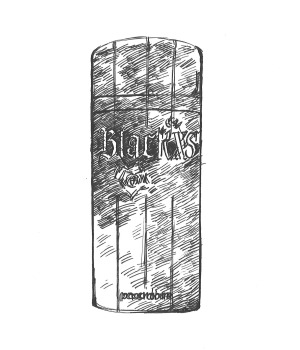 Perfumes can suggest many things. They can be uplifting, outrageous, disgusting, sexy, hard, delicious, warm, cold, luxurious, even sad. It might seem a bit far-fetched to describe a perfume as silly, but that’s what I think of Black XS by Paco Rabanne, and it’s also why I like it.
Perfumes can suggest many things. They can be uplifting, outrageous, disgusting, sexy, hard, delicious, warm, cold, luxurious, even sad. It might seem a bit far-fetched to describe a perfume as silly, but that’s what I think of Black XS by Paco Rabanne, and it’s also why I like it.
Created by Oliver Cresp (co-creator of Thierry Mugler’s love-it or loathe-it Angel) at perfume powerhouse Firmenich and licensed to fragrance multinational Puig, Black XS was launched in 2005. Its black-glass flip-top bottle originally came in an outer slip-case with a shirtless photo of the English model and amateur boxer Will Chalker, which added to its charm.
Packaging aside, its appeal is pretty simple: pump the spray button and you get an unexpectedly fruity blast of ripe strawberries – sweet, girly and completely at odds with the rather Gothic / Twilight-style design and lettering of the bottle. It’s not what you’d call a complex fragrance, but occasionally it’s fun to forget about trying to be cool and sophisticated: perfumes, like people, can sometimes take themselves too seriously, and there’s a silliness about Black XS that makes me smile every time I spray it on.
What’s really funny, though, is that Black XS doesn’t actually have any strawberry in it at all – at least it’s not among the official list of ingredients. What it does have is lemon, calamanzi (a kind of orange native to the Philippines), sage and what most perfume sites describe as ‘tagete’, which I’m assuming is an illiterate corruption of Tagetes, the Latin name for marigold.
The Mexican marigold, Tagetes erecta, is the source of an oil used in perfumery because of its attractive appley scent, and I wonder whether it’s the combination of orange, lemon and apple that fools my nose into thinking that what I’m really smelling is strawberry? If the effect is intentional it’s dead clever, but it’s the kind of thing that professional perfumers do all the time. Personally I think it’s magic.